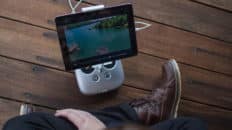The Flipped Classroom: Does It Actually Work?

According to the U.S. Department of Education, approximately 7,000 students drop out of high school each day, totalling in 1.2 million annually. That is a staggering number: 25% of freshmen who walk into a classroom on their first day of school will not graduate with their classmates. One of the reasons why students quit school is that the traditional one-size-fits-all model does not seem to work: it often results in limited student engagement and general lack of interest for school. Is there anything we can do about it?
Flipped classroom: a new approach to education
In the traditional educational model, the teacher would typically be the focus of the classroom, presenting information to students and trying to squeeze as much contents as possible into the lesson. New topics are covered in class, and students would normally be given some homework to read from the textbook and do some exercises to practice what they learned. In this environment, students’ engagement is limited as there is simply not enough time for them to discuss the topic with the teacher or work independently during the lesson, as all their time is dedicated to listening to what the teacher has to say. While teachers strive to make the learning process as engaging as possible, an approach known as “flipped classroom” is gaining more popularity every year.
What exactly is a flipped classroom?
In a flipped or inverted classroom, students study course material outside school with the help of textbooks, video lectures and other resources. Precious in-class time is dedicated to discussion; teachers help students work through problems individually and in groups. In other words, students cover new course material at home and do their “homework” in class.

Why go for the flipped classroom?
There are many reasons why the inverted classroom model is getting more and more popular over years. Just to name a few:
1.Students take control of the learning process. Since students watch video lectures and study other resources outside the classroom (at home or at school after classes), they can learn at their own pace and become the owners of the learning process. This way, they can take responsibility for their own learning and become more engaged with it.
2.More feedback and one-to-one time with the teacher. Since the active learning part happens within the in-class hours, with the flipped classroom approach students can receive valuable feedback from the teacher right in the class as they proceed with exercises and other activities, thus reducing the necessity for the teacher to provide extensive written notes on each student’s work. The opportunity for the teacher and student to discuss the problem right on the spot is invaluable and would have been impossible within the traditional learning/teaching model.
3.Collaborative learning The flipped classroom encourages collaborative learning, inspiring students to learn together, help each other with explanations and work on projects together. If some students comprehend the new material faster, they can help others with it.
How to Make the Flipped Classroom Work: Essential Tools
There are a number of tools that can help to make the flipped classroom work for both teachers and students and turn it into a successful experiment. In addition to the well-known Evernote, Google Drive and YouTube, here are additional resources commonly used in flipped classrooms:
Animatron for making great videos

This friendly online animation maker can be used to create great explainer videos and presentations for students. It allows importing your own files like images, audio and video, adding text and graphics on top. To provide access to the video for students, the teacher will just need to share a link.
The tool is also perfect for studying animation, since it is web-based and accessible from anywhere. It is possible to create own animations or go with ready-to-use animated sets. Students and teachers can work on a project together and share resources in real time. Get students involved in active learning and group filmmaking!
Edmodo for collaboration

Edmodo is one of the most widely used education tools, popular with both traditional and flipped models of learning. A teacher and students share an online classroom, where the teacher can load resources and educational materials, assignments and tests for students to access. Students can take tests online, submit their homework and interact with the teacher and each other. In addition to that, there is analytics that allow teachers to assess the progress of each student and define who needs help.
Poll Everywhere for feedback

This tool can be used for engaging students anytime, anywhere. Teachers can send questions regarding the covered material, ask students to participate in quizzes and find out their opinion on anything. Education plans are free for up to 40 responses per poll.
Scrible for common knowledge

This is a very useful collaborative tool that allows users to save webpages for later, annotate articles right in the browser, make comments directly on webpages, bookmark websites in the cloud and share annotated articles with others. In other words, it is perfect for building one’s own library of articles and make it accessible for anyone.
Slack for communication

Slack is a popular messaging app. It allows teachers to organize team conversations in open channels. It is convenient to make a channel for a project, a team or a specific discussion. Slack also allows creating private channels that students can use among themselves to discuss homework or certain projects. Private messages are convenient for one-to-one conversations between student and teacher.
“Rabbit holes” of the flipped classroom
Despite numerous advantages of the flipped classroom, including (but not limited to) deeper students’ engagement into the learning process, collaborative environment and more time for students and teachers to work together, the flipped classroom approach can have its pitfalls, too. Teachers might get carried away with videos that students are supposed to watch at home, forgetting the whole purpose of “inverting” the classroom. After all, the main idea behind it is to free up some in-class time for true and engaging learning.
In addition to that, the flipped classroom model relies heavily on trust and student self-motivation. While the approach proposes the learn-at-your-own-pace style of education, it might fail to acknowledge that some students are less motivated than others, therefore, they might turn out learning less.
Kids will be kids and they need more instruction and face to face learning. Expecting them to keep to a regimented flipped classroom schedule can be daunting! The concept is good but if it is implemented too much too fast and with little actual teacher interaction or reinforcement of lessons it will fail! – Mom of a flipper
Some experts also point out that the flipped classroom is not necessarily the best form of preparation to standardized tests. Students, parents and teachers might all have their own opinion regarding the mandated testing but the truth is students will probably need to pass the test anyway. In this regard, flipped classroom certainly do not “teach to the test”.
The last but not least: unfortunately, it would be impossible to make sure all students have Internet access at home, so that they all have equal resources for learning.
The bottom line is…. …that while some might argue the flipped classroom is not an absolute solution for every classroom, it might still be a great way of engaging students into the learning process on a deeper level, enhancing interest and – ultimately – improving their scores. Results show that in some cases flipping the classroom helped to improve the class failure rate by as high as 30%, and 94% of students pointed out that they liked this approach to learning. So why not give it a try?
Additional resources to learn more about the flipped classroom:
Blogs
- FlippedMind, by Mark Burkholz, a blog dedicated entirely to the flipped classroom
- Flipped Learning, by Jon Bergmann, pioneer of the Flipped Classroom movement
- Flip It Consulting, by Barbi Honeycutt, Ph. D.
Videos
- Let’s Use Video to Reinvent Education, a TED talk by Salman Khan, founder of the Khan Academy
- Five Things I Wish I Knew When I Flipped My Class
- I Flip, You Flip, We All Flip: Setting Up a Flipped Classroom, a talk by Keith Hughes
Presentations
- The Inverted Classroom, a keynote Prezi presentation at the EUSA Inspiring Teaching Conference 25th Jan 2012, University of Edinburgh
- Get Flipped: How to Flip Your Classroom
Articles
- Flipping the Classroom, an article by Cynthia J. Brame, Vanderbilt University
- The Flipped Classroom Guide for Teachers, by Christopher Pappas, eLearning
- Quick Start Guide to Flipping Your Classroom With Peer Instruction, by Julie Schell, Director of OnRamps and Strategic Initiatives at the University of Texas at Austin
- Leaving Lectures Behind, North Carolina State University
- How Flipping My Classroom Rescued My Math Block, by Education to the Core, run by Emily Liscom
- Flipped Classroom Beyond the Videos, by Catlin Tucker
Books
- Flip Your Classroom: Reach Every Student in Every Class Every Day, a book by Jonathan Bergmann and Aaron Sams, pioneers of the Flipped Classroom movement
- Flipped: The Stillwater Experience by Wayne Feller, by Wayne Feller




